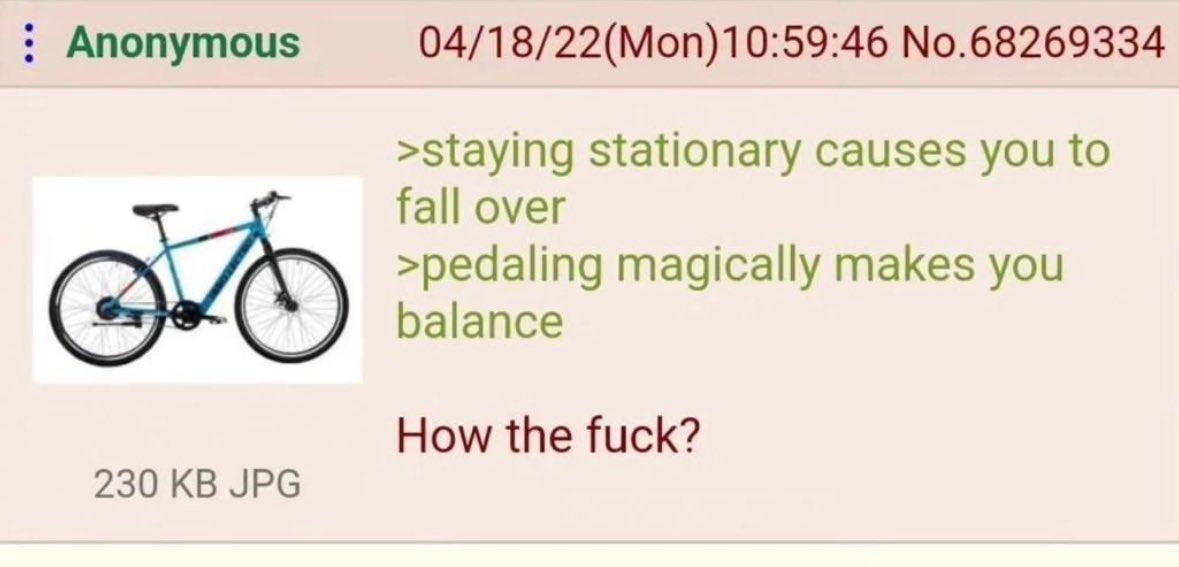this post was submitted on 17 Sep 2024
691 points (98.2% liked)
Greentext
6600 readers
684 users here now
This is a place to share greentexts and witness the confounding life of Anon. If you're new to the Greentext community, think of it as a sort of zoo with Anon as the main attraction.
Be warned:
- Anon is often crazy.
- Anon is often depressed.
- Anon frequently shares thoughts that are immature, offensive, or incomprehensible.
If you find yourself getting angry (or god forbid, agreeing) with something Anon has said, you might be doing it wrong.
founded 2 years ago
MODERATORS
you are viewing a single comment's thread
view the rest of the comments
view the rest of the comments

I'm surprised how much I'm seeing gyro brought up in these comments. It's a factor, but it's practically negligible. It's all in the steering. Start to tip right, and you'll subconsciously steer slightly to the right to correct your balance. Try to ride as slow as you can and you'll find yourself doing these corrections much more frantically and dramatically. The reason for that is because it takes longer for the wheel to roll under your center gravity and "catch" you when you're going slowly so you have to turn in quicker to maintain balance.
Notice that on almost every bike you see, the front axle on the bike is slightly ahead of the neck's axis of rotation. That offset does two things: 1. It stabilizes the steering so that the bike will tend to steer straight and 2. (more important to my point) It makes the balance-correcting effect of steering more immediate and dramatic, making it much easier to ride at slower speeds.
As a counter argument showing why gyro is barely a factor, these exist:
Edit: if you're not seeing the image like I'm not, Google "ski bike".
Then why does going faster also make it easier to balance on something without steering, like a snowboard?
My assumption is that when you're standing still relative to the ground you can fall in many directions, but once you start moving momentum limits the directions you can fall to the ones in line with your motion. So the faster you're moving the fewer directions you need to worry about.
Snowboards definitely have steering, you twist the board and shift your weight to manipulate how the edges contact the snow, it's just not quiet as explicit as a bikes front wheel. But whether it's a bike, a board, or literally any moving thing on land, the steering happens because you applied a lateral force to the ground and an equal and opposite force was applied back to you.
The snowboard uses different methods of applying that force, but other than that it's the same concept as described in my first comment: Greater speed allows more subtle corrections to take effect more quickly.
Now the snowboard does have a wider contact area with the ground, but that really only helps you on flat ground at very low speed, or standstill. Advanced boarders will carve transitioning from edge to edge most of the time.